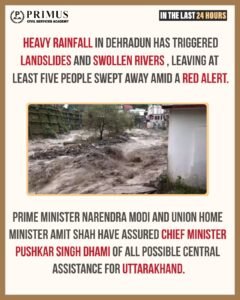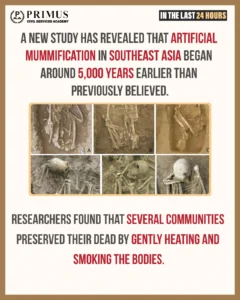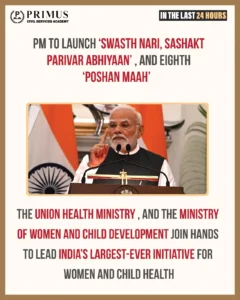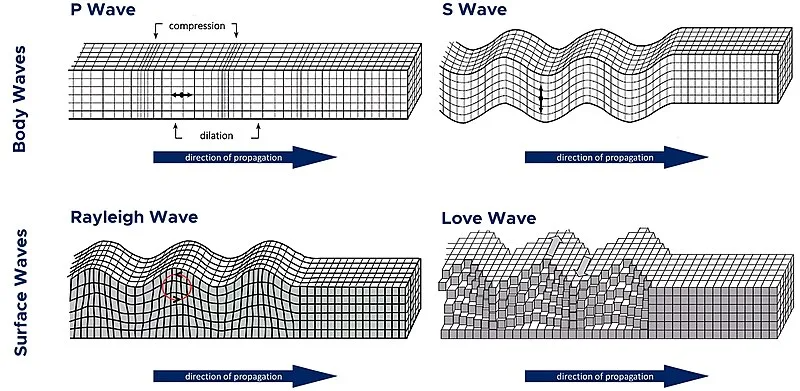September 16th Current Affairs
Table of Contents
NCERT History Textbooks
NCERT History Textbooks NCERT History for Class-VI (Social Science – Our Pasts-I) NCERT History for Class-VII (Social Science – Social
Kannada Literature Optional Syllabus
Home / ಐಚ್ಚಿಕ ಕನ್ನಡ ಸಾಹಿತ್ಯದ ಪಠ್ಯಕ್ರಮ ಐಚ್ಚಿಕ ಕನ್ನಡ ಸಾಹಿತ್ಯ ಪತ್ರಿಕೆ – 1 ವಿಭಾಗ – ಎ ಅ) ಕನ್ನಡ ಭಾಷೆಯ ಚರಿತ್ರೆ ಭಾಷೆ
UPSC Current Affairs – October 6th
October 06th Current Affairs Home / Table of Contents 36-hour curfew imposed in parts of Odisha’s Cuttack over communal tensions
Religious Minorities in India and the Challenge of Communal Harmony: A Sociological Reflection on the Cuttack Violence
Home / Religious Minorities in India and the Challenge of Communal Harmony: A Sociological Reflection on the Cuttack Violence Sociology
UPSC Current Affairs – October 4th
October 04th Current Affairs Home / Table of Contents Isabgol Processors threaten to halt purchases from October 6th over GST
Sologamy and Contemporary Trends in Marriage: A Sociological Perspective
Home / Sologamy and Contemporary Trends in Marriage: A Sociological Perspective Sociology Paper 1: Systems of Kinship – Contemporary trends
UPSC Current Affairs – October 3rd
October 03rd Current Affairs Home / Table of Contents NASA IMAP to show how solar particles are energised and shield
Understanding Indian Festivals through Durkheim: Religion, Rituals, and Collective Conscience
Home / Understanding Indian Festivals through Durkheim: Religion, Rituals, and Collective Conscience Sociology Paper 1: Émile Durkheim – Religion and
UPSC Current Affairs – September 30th
September 30th Current Affairs Home / Table of Contents Ladakh groups reject talks with government, Ministry says open to dialogue
Caste Census in India: A Sociological Perspective
Home / Caste Census in India: A Sociological Perspective Sociology Paper 2: Caste System – Features of Caste system. The
Heavy rain triggers landslides in Dehradun amid red alert; at least 5 swept away as rivers swell

Relevance to UPSC
GS-1: Geography / Environment
Hill regions prone to landslides, flash floods due to intense monsoon/cloudbursts.
Uttarakhand’s fragile terrain & unsustainable land use increase risk.
Climate change → erratic rainfall, increasing disaster frequency/severity.
2. GS-3: Disaster Management & Preparedness
IMD/NDMA red alerts show the importance of early warning systems.
Coordination of NDRF, SDRF, local/state authorities is crucial.
Need for resilient infrastructure, evacuation planning.
3. GS-3: Environment & Sustainable Development
Ecological impact and human loss highlight the need for sustainable development.
Forest cover, controlled construction to reduce runoff.
Overdevelopment threatens hill ecosystem stability.
More About the News
- Heavy rain in Dehradun (Uttarakhand) triggered landslides and swelling rivers; at least 5 people were swept away in areas including Tapkeshwar, Rajpur Shikhar Falls etc.
- A red alert was issued by IMD and NDMA; forecasts included heavy to very heavy rain, thunder, lightning, possibility of intense rainfall; officials warned of landslides and flash floods in sensitive areas.
- Rescue operations are underway by NDRF, SDRF and local authorities; infrastructure damage noted: bridges washed away, roads blocked, schools closed; residents evacuated to safer locations.
Landslides
Landslides are movements of rock, soil or debris down slopes under gravity, often triggered by natural causes (rainfall, earthquakes, snow melt) and human activities (deforestation, slope cutting, urbanisation). With climate change intensifying extreme weather, landslides are becoming more frequent, more damaging, and affecting larger populations. Understanding the patterns, hotspots, mitigation strategies and governance is essential to reduce risk and build resilience.
Key Trends
- Increasing frequency due to extreme precipitation: Under moderate climate change projections, the annual frequency of landslides triggered by extreme rainfall is projected to increase globally by ~7‑10% in the periods 2031‑2060 and 2066‑2095, compared to 1971‑2000.
- Rising casualty risk: The same study projects global annual casualties from landslides to increase substantially (from ~3,240 to ~7,670 and ~8,380 under SSP2‑4.5 scenario) as extreme precipitation becomes more common.
- High geographic concentration of events: Asia accounts for most landslide events and fatalities. Countries like India, China, Nepal, Philippines, Indonesia etc are among those with high risk.
- Growing human‑triggered landslides: Alongside natural triggers, human disturbances (deforestation, hill cutting, mining, poorly planned infrastructure) are contributing significantly to landslide occurrence.
- Slow‑moving landslides gaining attention: These may not immediately kill, but over time can damage infrastructure and affect livelihoods; climate change and land use change increase their risk.
Causes
Causes can be grouped into Natural and Anthropogenic.
Natural causes:
- Heavy / extreme rainfall (monsoon bursts, cloudbursts). Saturates soil, raises pore water pressure, reduces shear strength.
- Seismic activity / earthquakes: Shaking destabilizes slopes.
- Morphological/geological factors: Weak rock strata, joints, fissured/faulted terrain, slopes, steepness, gradient, soil type/weathered rock.
- Snow melt / glacial retreat: Rapid melting increases water infiltration; glacial lakes bursting; ice avalanches generating landslide ‟crowds.”
Anthropogenic (human induced) causes:
- Deforestation / removal of vegetation: Vegetation holds soil, reduces runoff.
- Slope cutting, excavation for roads, infrastructure, urban expansion.
- Unplanned land use, encroachment in vulnerable terrain.
- Mining, quarrying, dams / reservoir drawdown: Changing load, weakening stability.
- Poor drainage, water management: Improper runoff / seepage increases water in slopes.
Indian & Global Hotspots
India:
- Himalayas (north‑west & north‑east) are highly landslide‑prone.
- Western Ghats (steep terrain, heavy rainfall).
- States like Kerala, West Bengal (Darjeeling), Sikkim, Mizoram, Assam, Nagaland, Arunachal Pradesh.
- Districts like Wayanad (Kerala) saw especially severe recent events.
Global:
- Himalayan arc region (Nepal, Bhutan, India, China)
- Southeast Asia (Philippines, Indonesia, etc.)
- Central and South America (Andesʼ slopes)
- East Africa (mountainous borders of Rwanda, Uganda, Tanzania) etc.
Impacts
- Loss of Life:
- Example: The Wayanad landslides (2024, Kerala) killed over 420 people.
- Damage to Property and Infrastructure:
- Roads, bridges, houses, communication networks are often destroyed. E.g., in Ecuador (Alausí, 2023) a landslide destroyed over 160 buildings and damaged a major highway.
- Economic Loss / Livelihoods:
- Loss of agricultural land, tea estates, tourism revenue. E.g., in Kerala many tea and cardamom estates were affected in Wayanad.
- Environmental Degradation:
- Soil erosion, deforestation, siltation of rivers/reservoirs. Example: landslides in Western Ghats removing vegetation cover and increasing sediment load in rivers. (General trend)
- Displacement & Social Disruption:
- Communities uprooted; displacement to relief camps; psychological trauma. Example: after the Wayanad landslides, thousands were displaced.
Challenges in Limiting Landslides
- Inadequate Hazard Mapping & Early Warning: Many vulnerable slopes are not remapped at fine scale; warning systems are weak. Example: in Wayanad, some affected villages were not classified landslide-prone and people didn’t evacuate though warnings existed.
- Rapidly Changing Climate & Rainfall Patterns: Monsoon intensification, extreme rainfall makes predictions difficult; existing models may be outdated.
- Unplanned / Illegal Construction and Land Use Change: Hill‑cutting, unregulated tourism infrastructure. e.g., in Wayanad, resort construction and land use conversions worsened the risk.
- Limited institutional capacity & resources: Many districts (especially in remote hilly regions) lack technical expertise or funds to implement mitigation (engineering, afforestation etc.).
- Lack of community awareness / social vulnerability: People may not recognise small signs (cracks, water seepage); cultural/social constraints on relocation; livelihoods tied to slopes.
Role of NDMA, SDMA, DDMA
- NDMA (National Disaster Management Authority):
- Provides national‑level guidelines for landslide hazard zonation, risk assessment, mitigation.
- Preparing schemes like Landslide Risk Mitigation Scheme (LRMS) for financial support for site‑specific mitigation, R&D, early warning etc.
- Recently emphasising “3Ms” – Mapping, Monitoring, Mitigation – in its action plan to improve responsiveness.
- SDMA (State Disaster Management Authority):
- Adapts NDMA guidelines at state level; implements hazard zonation in hilly areas; oversees training, capacity building; coordinates with state line departments (forest, geology, public works).
- Adapts NDMA guidelines at state level; implements hazard zonation in hilly areas; oversees training, capacity building; coordinates with state line departments (forest, geology, public works).
- DDMA (District Disaster Management Authority):
- Local implementation: identifying local landslide‑prone sites, community awareness, early warning issuance, coordinating rescue and relief.
Government Measures Taken
- National Landslide Susceptibility Mapping (NLSM) by Geological Survey of India (since ~2014) to map prone areas on macro scale (1:50,000).
- Landslide Atlas of India by ISRO’s NRSC to identify hotspots, prepare hazard zonation, guide policy.
- NDMA guidelines on management of landslides and snow avalanches.
- LRMS (Landslide Risk Mitigation Scheme) under preparation to provide financial support to states for mitigation projects, monitoring, etc.
- Incorporating mapping, monitoring, and mitigation (3Ms) in NDMA’s action plan.
Best Practices
- Global:
- Colombia / Philippines / Indonesia – Integrated early warning systems + community engagement
These countries combine rainfall monitoring, remote sensing, community knowledge to give warnings and evacuate in time. (E.g. Philippines’ warning systems in mountainous provinces). - Switzerland / European countries – strict land‑use regulation in hazard zones + engineering solutions
E.g., in the Alps, strict zoning, controlled forest cover, terraces, slope stabilization, avalanche/landslide sheds, drainage etc.
- Colombia / Philippines / Indonesia – Integrated early warning systems + community engagement
- Indian:
- Kerala’s hazard zonation and reporting post-Wayanad – improved remote sensing, mapping of districts, identifying hazard zones; media & academic pressure leading to policy responses.
- GSI’s work in mapping and inventory, Landslide Atlas, and state‑level action in Uttarakhand / Himachal Pradesh — having slope stabilization projects, slope protection in highways, afforestation etc.
Way Forward
- Expand and update high‑resolution landslide hazard zonation maps for all vulnerable districts.
- Develop and deploy real‑time monitoring & early warning systems, especially in steep / vulnerable slopes.
- Enforce land use controls / regulation in high hazard zones; restrict construction, mining, hill‑cutting.
- Strengthen institutional capacity at state and district level – technical, financial, human.
- Community awareness and preparedness: local monitoring, evacuation plans, restoration of native vegetation.
- Incorporate climate change projections into planning – anticipating more intense rainfall events.
- Incorporate nature‑based solutions (afforestation, slope stabilization using bioengineering).
- Promote disaster resilient infrastructure design (roads, retaining walls, drainage etc.).
- Encourage research & technological innovation (remote sensing / AI based detection, SAR etc.).
Landslides are increasingly becoming a major hazard in many parts of India and globally, amplified by extreme weather and unsustainable human activity. Mitigating their toll demands a multi‑pronged strategy combining science, regulation, and community participation. With climate change trajectories pointing to more intense precipitation, the urgency to adapt, anticipate, and build resilience has never been greater.
Prelims MCQ
Q. With reference to landslides in India, consider the following statements: 1. The Western Ghats experience more fatal landslides than the Himalayan region due to higher population density and rainfall intensity. 2. The Landslide Atlas of India identifies Uttarakhand, Kerala, and Mizoram as some of the most landslide-prone states. 3. Landslides caused by cloudbursts and glacial lake outbursts are purely geological and unaffected by human activities. 4. National Landslide Susceptibility Mapping (NLSM) uses satellite data and geological inputs to classify zones based on risk. Which of the above statements are correct?
A. 1 and 2 only
B. 2 and 4 only
C. 1, 3 and 4 only
D. 2, 3 and 4 only
Mains Question
- In view of increasing landslide hazards across India, examine the adequacy of existing measures in mapping, monitoring, and mitigation. Suggest policy interventions that could strengthen resilience, especially at local and district levels.
ASI- Protected Monuments can’t be Declared as Waqfs: Supreme Court refuses to stay Waqf Amendment Act 2025 Provision

Relevance to UPSC
GS Paper I – Indian Heritage, Art & Culture
- Highlights protection of ancient monuments / archaeological sites by ASI and relevant laws.
- Clarifies how heritage conservation interacts with religious practices and cultural traditions.
GS Paper II – Polity & Constitutional Law / Governance
- Examines legislative competence: Waqf (Amendment) Act, 2025 vs AMASR Act, 1958.
- Raises issues of rights under Article 25 (freedom of religion) vis‑à‑vis State’s duty to preserve heritage.
- Demonstrates separation and balance of power: judiciary interpreting conflicts between religious and heritage laws.
More About the News
- The Supreme Court refused to stay Section 3D of the Waqf (Amendment) Act, 2025, which invalidates any waqf declaration over ASI-protected monuments or areas.
- Petitioners argued it would infringe on Muslims’ right to continue customary religious practices at waqf-declared sites.
- The Government contended that some mutawallis obstruct ASI conservation efforts by misusing waqf status.
- The Court noted that Section 5(6) of the AMASR Act, 1958 already allows customary religious practices at protected monuments.
- Therefore, the Court found no merit in the plea and upheld the validity of Section 3D.
Archaeological Survey of India (ASI)
The Archaeological Survey of India (ASI), founded in 1861 under British rule, is India’s premier agency for archaeological research and preservation of cultural heritage. Over time it has evolved from a colonial antiquarian survey organization into a modern statutory body with responsibilities spanning excavation, conservation, documentation, and heritage management. In an era of rapid development and climate change, the ASI’s role remains crucial to safeguard India’s multicultural past while reconciling it with contemporary needs.
Evolution
- 1861: Established by Sir Alexander Cunningham, first Director‑General. Its early tasks involved surveying and identifying monuments, epigraphy, etc.
- Early 20th Century: Under leadership like Sir John Marshall, increased excavations (e.g., Harappan Civilization), better documentation, institutional reforms.
- Post‑Independence: ASI put under the Ministry of Culture, expanded mandates, legal powers via acts like AMASR (Ancient Monuments and Archaeological Sites and Remains Act), creation of regional circles, Science Branch etc.
- Recent decades: Emphasis on heritage management, tourism, digital documentation, standing committee reports recommending reforms, community engagement, advanced scientific techniques.
Constitutional & Non‑Constitutional Provisions
- Non‑Constitutional / Statutory Provisions:
- Ancient Monuments Preservation Act, 1904 (British era) – early legal protection.
- AMASR Act, 1958 (Ancient Monuments and Archaeological Sites and Remains Act) – regulates protection, prohibited/regulated areas, ASI’s powers over centrally protected monuments.
- Rules thereunder, and schedules listing centrally protected monuments.
- Constitutional Provisions (implicit / derived):
- Article 49: Protection of monuments and places of national importance – Directive Principle of State Policy. provides constitutional backing for state’s duty to preserve heritage.
- Article 29 & 30: Cultural rights; minority communities’ rights to conserve their heritage. ASI’s interventions sometimes intersect with religious/cultural uses.
- Articles relating to cultural and educational rights and freedom of religion (Article 25) in balancing heritage protection vs religious practices.
Role & Functions
- Identification, survey, excavation of archaeological sites.
- Conservation, restoration, maintenance of centrally protected monuments and archaeological remains.
- Documentation & research: epigraphy, architecture, artefacts; publishing reports, journals; maintaining libraries.
- Heritage management: tourism, site protection, regulating activities around monuments (regulated/prohibited zones), community engagement.
- Preventing illegal trafficking of antiquities, protection against vandalism, encroachment etc.
- Science Branch: material preservation, chemical conservation, laboratory analysis.
Significant Findings of ASI
- Excavation and documentation of Indus Valley Civilization sites (Harappa etc.) providing early urban civilization evidence.
- Keeladi (Tamil Nadu): findings of artefacts suggesting literate, urban and secular society in South India in early historic period.
- Conservation and restoration of iconic monuments: Taj Mahal, Red Fort, Ajanta & Ellora caves, Konark Sun Temple etc.
- Compilation of epigraphical inscriptions (Corpus Inscriptionum Indicarum, Epigraphia Indica) that help reconstruct ancient history, languages, and rules.
- Heritage mapping and inclusion of many monuments (over 3,600 centrally protected monuments) across India under ASI care.
Advantages of Having ASI
- Preservation of national heritage & identity – e.g., maintaining monuments like the Taj Mahal ensures continuity of cultural memory.
- Academic and historical research enabled – e.g., epigraphical findings inform early Indian polities, languages.
- Tourism and economic benefit – e.g., well‑conserved monuments attract domestic & international tourists, boosting local economy (e.g., Agra, Ajanta).
- Protection against misuse, encroachment & illicit trafficking – e.g., ASI prevents artefact theft & defines regulated areas around monuments to control surrounding development.
- Scientific conservation techniques & standards – use of archaeological science (chemistry, structural engineering, etc.) to repair and preserve monuments (e.g., Ajanta murals, Ajanta caves’ preservation).
Impacts of ASI
- Cultural and identity strengthening – restoring sites allows people to connect with history; e.g., conservation of Konark temple revives Sun Temple’s artistry.
- Educational impact – site museums, reports, guided tours help educate public scholars; e.g., ASI’s work at Sarnath informs about Buddhism.
- Tourism development & urban growth – e.g., Taj Mahal’s preservation has made Agra a global tourist hub, supporting local jobs.
- Social cohesion & multi‑religious cultural heritage – many monuments reflect composite architecture (Hindu, Muslim), e.g., Qutub Minar, Fatehpur Sikri. Protecting them supports secular heritage.
- International recognition & global heritage status – ASI’s care of UNESCO world heritage sites: site management helps India maintain status (e.g., Ellora, Khajuraho).
Challenges Faced by ASI
- Resource constraints (funding, manpower) – many lesser-known monuments poorly maintained due to lack of budget.
- Encroachment, urbanisation & illegal development – regulated/prohibited areas often violated; adjacent development harms integrity.
- Political interference & credibility issues – e.g., Keeladi excavations controversies, delayed transfers of archaeologists; selective emphasis on narratives.
- Use of outdated methodologies / lack of technological adoption – slower adoption of remote sensing, LiDAR, GPR etc. Standing Committee recommendations.
- Balancing access vs conservation / tourism pressures – too many visitors damage monuments; pressure for development vs preservation. Also environmental damage, pollution.
Way Forward
- Prioritize rationalization & categorization of monuments: separate monuments of national vs regional vs local importance to focus resources.
- Strengthen ASI’s institutional autonomy and transparency: reduce undue political interference; ensure prompt and peer‑reviewed publication of findings.
- Expand usage of modern technologies: LiDAR, ground penetrating radar, remote sensing, 3D modelling, digital archives.
- Increase community involvement & local stewardship: engage nearby communities in conservation, awareness, livelihood linked to heritage tourism.
- Improve funding, human resources, training: ensure each circle has adequate technical staff; continuous capacity building.
- Implement sustainable tourism policies: limit footfall, manage the environment and maintain regulated zones around sites.
- Stronger enforcement against encroachment & illicit trade; coordination between ASI, state archaeology departments, police.
- Integrate heritage preservation with urban planning: planning around monuments to avoid damage.
The ASI stands at a pivotal juncture: with India’s rapid development, it must evolve from being merely a conservator of relics to being an agent of living heritage integration. Modernization—both technological and institutional—along with decentralized, inclusive approaches will be essential. With conscious policy reforms and investment, ASI can ensure that India’s past remains vibrant, respected, and relevant for future generations.
Prelims MCQ
Q.With reference to the Archaeological Survey of India (ASI), consider the following statements: 1. The ASI is a statutory body under the Ministry of Culture. 2. It has the authority to regulate construction within 200 meters of centrally protected monuments. 3. The ASI publishes the Epigraphia Indica, a journal on ancient inscriptions. 4. All monuments maintained by ASI are UNESCO World Heritage Sites. Which of the above statements are correct?
A. 1 and 3 only
B. 1, 2 and 3 only
C. 2 and 4 only
D. 1, 2, 3 and 4
Mains Question
Q. Evaluate the role and effectiveness of the Archaeological Survey of India in preserving India’s cultural heritage. What reforms are necessary to address its challenges and ensure heritage conservation in the 21st century?
BCCI breaks silence as ACC weighs disciplinary action over India's no-handshake snub vs Pakistan

Relevance to UPSC
GS Paper II – International Relations / Polity
- Reflects how political tensions between states (India‑Pakistan) spill into sports diplomacy, affecting bilateral relations and people‑to‑people contact.
- Illustrates soft power dynamics: sporting gestures often carry symbolic weight in foreign policy and can affect international perception.
GS Paper IV – Ethics, Governance, and Sportsmanship
- Brings up ethical questions about the “spirit of sport”: fairness, goodwill, respect vs symbolic political protest.
- Responsibility of sports bodies (BCCI, ACC, etc.) to maintain norms, balance national sentiment vs sportsmanship.
More About the News
- India’s cricket team refused the customary pre‑ and post‑match handshake with Pakistan in the Asia Cup 2025 match in Dubai, citing solidarity with victims of the Pahalgam terror attack.
- The Pakistan Cricket Board (PCB) has formally protested, calling the act “against the spirit of sports,” and demanded action including removal of the match referee and lodging complaints with ACC / ICC.
- BCCI has responded by saying that handshaking is not mandated by any law or rulebook—it’s a goodwill gesture, and there is no binding requirement to do so.
Sportsmanship
“Sports do not build character. They reveal it.” – Heywood Broun
Sportsmanship is not just about winning or losing but upholding fairness, respect, and humility—both in competition and in life. In an age of growing competition and polarization, the values rooted in true sportsmanship are vital for personal integrity and public ethics.
Meaning of Sportsmanship
- Sportsmanship refers to ethical, respectful, and fair behavior displayed by individuals in competitive settings, particularly in sports.
- It reflects grace in victory and dignity in defeat, driven by respect for rules, opponents, and the spirit of the game.
Features of Sportsmanship
- Respect for rules and opponents
- Graceful acceptance of outcomes (win or loss)
- Emphasis on fair play over winning at any cost
- Self-control and emotional balance
- Team spirit and humility
Value Systems That Promote Sportsmanship & Value Systems That Undermine It
Positive Value System (Promotes Sportsmanship) | Negative Value System (Undermines Sportsmanship) |
Integrity – Sticking to ethical principles, even under pressure | Win-at-all-costs Mentality – Prioritizing victory over fairness and ethics |
Empathy – Understanding and respecting opponents’ perspectives | Hostility – Treating competitors as enemies, not fellow players |
Discipline – Controlling emotions, staying calm under provocation | Impulsiveness – Reacting aggressively to defeat, decisions, or provocation |
Respect – For rules, referees, coaches, and opponents | Disregard for Authority – Undermining officials or flouting rules |
Responsibility – Accepting mistakes, outcomes, and team failures | Blame-shifting – Accusing others for personal or team failures |
Humility – Staying grounded in victory | Arrogance – Boasting, mocking opponents, or showing off |
Team Spirit – Collaborating for collective success | Self-Centeredness – Prioritizing personal glory over team ethics |
Advantages of Sportsmanship
- Promotes Ethical Conduct
→ Players like Rahul Dravid are celebrated not just for skill but for humility and fairness. - Builds Trust and Team Spirit
→ MS Dhoni’s decision to recall Ian Bell after a controversial run-out fostered mutual respect. - Uplifts Public Morale and Role Modeling
→ Simone Biles choosing mental health over medals inspired balanced ambition in youth. - Reduces Conflict and Ensures Harmony
→ Players who accept umpire decisions without aggression reduce crowd hostility. - Encourages Long-Term Success and Legacy
→ Sachin Tendulkar’s respect for the game won him global admiration beyond statistics.
Disadvantages
- May Lead to Personal Loss in Competitive Situations
→ Giving up a point in fairness may result in a match loss, as seen in tennis walkovers. - Can Be Exploited by Unethical Opponents
→ Fair play can be misused by those who fake injuries or bend rules, as seen in some football matches. - Perceived as Weakness in High-Stake Games
→ Overemphasis on humility may be misunderstood as lack of aggression in elite sports. - Institutional Pressure to Win Overrides It
→ Coaches may discourage sportsmanship to focus on result-oriented performance. - Lack of Recognition in Media and Fame
→ Flashy performances often overshadow those who quietly uphold values.
Impacts of Sportsmanship
- Enhances National Image Globally
→ India’s Olympic athletes applauding competitors reflects India’s soft power and dignity. - Builds Ethical Citizenship
→ Athletes who transition into public life (e.g., Abhinav Bindra) carry the same moral code into leadership. - Improves Mental Health and Emotional Maturity
→ Athletes like Novak Djokovic emphasize mental strength and maturity in competition. - Promotes Cross-Cultural Understanding
→ International camaraderie in the Olympics/World Cups builds peace and mutual respect. - Encourages Ethical Governance in Sports Bodies
→ Sportsmanship culture demands transparent selection, fair play, and clean administration.
Challenges in Adopting Sportsmanship
- Commercialization of Sports
→ IPL controversies (e.g., spot-fixing) show how money can override fairness. - Hyper-Nationalism and Political Pressure
→ India-Pakistan matches often bear political baggage, discouraging sportsmanlike gestures. - Toxic Fan Culture and Media Pressure
→ Virat Kohli’s aggression was once celebrated by the media, encouraging similar behavior. - Lack of Ethical Training in Early Sports Education
→ Young athletes are often coached to win, not to play ethically. - Inconsistent Penalties for Unfair Behavior
→ Disparity in handling ball-tampering (e.g., Steve Smith vs others) weakens deterrence.
Best Practices
- Global:
- Olympic Charter – Promotes fair competition, mutual understanding, and respect.
- FIFA Fair Play Awards – Recognizes players and teams for exceptional sportsmanship.
- Indian:
- Khelo India Ethics Curriculum – Aims to inculcate values alongside athletic training.
- Arjuna Award Criteria – Includes not just performance but sportsmanship and discipline.
Way Forward
Q. “Sportsmanship is not just about how you play the game, but about how you live your values.” Critically examine this statement in the context of ethical leadership and societal behavior.
Prelims MCQ
Q. Which of the following are key components of sportsmanship from an ethical perspective?
1. Respect for opponents and referees
2. Aggressive competitiveness to win at all costs
3. Acceptance of both victory and defeat with grace
4. Willingness to break rules if it serves team success
A. 1 and 3 only
B. 2 and 4 only
C. 1, 2 and 3 only
D. 1, 3 and 4 only
Sportsmanship is defined by respect, humility, fairness, and emotional balance. Statements 1 and 3 align with ethical values. Statements 2 and 4 contradict the moral foundation of sportsmanship and promote unethical behavior.
Mains Question
Q. “India–Pakistan relations oscillate between dialogue and distrust. Critically analyse the evolution, challenges, and future prospects of bilateral ties in the context of regional and global geopolitics.”
Dawn of artificial mummification pushed back 5,000 years

Relevance to UPSC
- GS Paper I – Art & Culture / History & Archaeology
• Revises the timeline of ancient Egyptian funerary customs, thereby affecting our understanding of early civilisational practices.
• Offers insights into technological, ritual, and cultural evolution in prehistoric societies. - GS Paper III – Science & Technology
• Shows the role of scientific techniques (chemical/biomolecular analysis, radiocarbon dating) in re-evaluating historical claims.
• Highlights interdisciplinary research combining archaeology, biology, chemistry.
More about the News
- New biochemical / archaeological studies have revealed that artificial (intentional) mummification in Egypt began around 4,300 BC, about 1,500 years earlier than prior estimates.
- These findings were based on analysis of embalming compounds (resins, plant extracts, bitumen etc.) present on linen wrappings from prehistoric graves in Badari / Upper Egypt.
- They indicate that even in early phases before state‑level Pharaonic power, there was organized funerary practice, ritual significance and possibly widely shared belief systems among ancient communities.
Pre-Historic India
Pre-Historic India represents the vast span of human existence before written records, covering the earliest stages of human culture and societal evolution. Studying this era is crucial to understand the roots of Indian civilization and its diverse cultural heritage. As India progresses, preserving and interpreting its pre-historic past will deepen our knowledge of human adaptability and innovation.
Evolution of Pre-Historic India
- Refers to the period before the advent of writing (~3300 BCE in India).
- Evolution traced from earliest stone tools to settled agricultural communities.
- Helps map human cognitive, technological, and social progress over millennia.
Sources to Learn About Pre-Historic India
- Archaeological Excavations: Sites like Bhimbetka, Mehrgarh.
- Artifacts: Stone tools, pottery, cave paintings, fossils.
- Carbon dating and other scientific methods: To establish timelines.
- Ethnoarchaeology: Study of living cultures for clues to past lifestyles.
- Rock art and petroglyphs: Visual records of early humans.
Authority, Bodies, and Ministries Involved
- Archaeological Survey of India (ASI): Primary agency for excavations, preservation.
- Ministry of Culture: Responsible for heritage and archaeological policies.
- State Archaeology Departments: Work on regional excavations and heritage.
- University Departments of Archaeology & History: Academic research and publications.
- National Museum and museums at regional levels: Preservation and display.
Stages of Pre-Historic India with Features
Stage | Time Period | Features |
Paleolithic (Old Stone Age) | ~2.5 million – 10,000 BCE | Use of crude stone tools, hunter-gatherer lifestyle, discovery of fire, cave paintings. |
Mesolithic (Middle Stone Age) | 10,000 – 8,000 BCE | Microlithic tools, beginning of semi-nomadic life, hunting & gathering with more advanced tools. |
Neolithic (New Stone Age) | 8,000 – 3,300 BCE | Agriculture begins, domestication of animals, pottery, settled villages. |
Chalcolithic (Copper Age) | 3,300 – 1,500 BCE | Use of copper tools, early urbanization, trade networks, rise of craft specialization. |
Important Sites & Significant Findings
- Bhimbetka (Madhya Pradesh): Oldest cave paintings; evidence of early human life.
- Mehrgarh (Baluchistan, Pakistan): Early farming village; earliest evidence of cotton cultivation.
- Hunsgi (Karnataka): Neolithic site with pottery and tools.
- Bagor (Rajasthan): Largest Mesolithic site in India.
- Ahar-Banas (Rajasthan): Chalcolithic site with advanced copper tools.
Why We Need to Know About Pre-Historic India
- Understanding Human Origins: Bhimbetka caves reveal the earliest human art in India.
- Tracing Technological Progress: Evolution from stone to metal tools in Chalcolithic era.
- Foundation of Agriculture: Mehrgarh shows earliest farming practices that shaped later civilizations.
- Cultural Roots: Rock art provides insights into belief systems and daily life.
- Environmental Adaptation: Study of tools and settlements indicates how humans adapted to changing climates.
Impacts of Pre-Historic India
- Basis for Later Civilizations: Neolithic farming led to Indus Valley urbanization.
- Heritage and Identity: Sites like Bhimbetka foster pride in India’s ancient cultural heritage.
- Tourism and Economy: Archaeological sites attract tourists, boosting local economies.
- Scientific Knowledge: Advances in dating and excavation techniques improve understanding of human evolution.
- Cultural Continuity: Pre-historic traditions influence tribal and folk cultures even today.
Challenges Faced
- Preservation Issues: Urbanization threatens sites like Bhimbetka.
- Lack of Awareness: General public unfamiliar with significance of pre-historic heritage.
- Funding Constraints: Limited budget for excavation and conservation by ASI.
- Illegal Excavations: Looting and smuggling of artifacts from sites like Mehrgarh.
- Climate Impact: Weathering and environmental degradation damage fragile cave paintings.
Government Measures Taken
- Declaration of Bhimbetka as UNESCO World Heritage Site.
- Increased funding to ASI and state archaeology departments.
- Digital documentation and virtual tours to increase public engagement.
- Strict laws against smuggling under Antiquities and Art Treasures Act.
- Collaboration with international research bodies for scientific studies.
Best Practices
- Community involvement in site preservation (local tribal groups at Bhimbetka).
- Use of modern technology like 3D scanning for artifact preservation.
- Public awareness campaigns and heritage walks.
- Integration of heritage education in school curricula.
- International collaborations for archaeological research.
Way Forward
- Enhance interdisciplinary research combining archaeology, anthropology, and science.
- Expand digital archives accessible globally.
- Encourage local communities’ custodianship of sites.
- Increase investments in climate-resilient conservation methods.
- Promote sustainable tourism balancing preservation and access.
Prelims MCQ
Q. Which of the following statements about Pre-Historic India are correct?
1. The Paleolithic period was characterized by the use of microlithic tools.
2. Mehrgarh is a significant Neolithic site known for early farming evidence.
3. The Chalcolithic period saw the use of copper tools alongside stone tools.
A. 1 and 2 only
B. 2 and 3 only
C. 1 and 3 only
D. 1, 2 and 3
The Paleolithic period primarily featured crude, large stone tools, not microlithic ones (which belong to the Mesolithic). Mehrgarh is indeed a key Neolithic site with early farming evidence, and the Chalcolithic period introduced copper tools along with continued stone tool use.
Mains Question
Q. Discuss the significance of Pre-Historic India in understanding the evolution of human society and its impact on later Indian civilizations. How can modern India leverage this heritage for national development?
PM to launch ‘Swasth Nari, Sashakt Parivar Abhiyaan’, and eighth ‘Poshan Maah’

Relevance to UPSC
GS Paper I – Society / Health / Human Development
- Addresses indicators like maternal health, child nutrition, anaemia, adolescent health etc., which are part of India’s human development landscape.
- Helps in understanding public health challenges and social determinants of health among women & children.
GS Paper II – Polity / Social Justice / Government schemes
- Illustrates how government policy‑interventions are used to address gender and child welfare issues, implementing rights and welfare through health and nutrition campaigns.
- Shows convergence of multiple ministries (Health & Family Welfare, Women & Child Development) and multi‑stakeholder (PRI, local bodies, volunteers) implementation.
More about the News
- The Swasth Nari, Sashakt Parivar Abhiyaan will be launched by Prime Minister Modi on 17 September 2025, coinciding with his 75th birthday, running until 2 October. It will be combined with the 8th Poshan Maah.
- Under the campaign, 75,000 health camps will be held at Ayushman Arogya Mandirs, Community Health Centres (CHCs), district hospitals and other health facilities to provide preventive, promotive, and curative health services specifically for women, adolescent girls, and children.
- Activities will also include observing Poshan Maah via Anganwadi centres, conducting nutrition education, recipe demonstrations, awareness on anaemia, menstrual hygiene, balanced diet, early detection/treatment of health issues, with convergence of multiple ministries and community mobilisation.
Poshan Abhiyaan
Malnutrition has long plagued India’s children and women, undermining human capital and economic growth. Poshan Abhiyaan (PM’s Overarching Scheme for Holistic Nutrition) represents a focused, technology-driven effort to tackle this issue through convergence and targeted interventions. As India aims to become a developed nation, nutritional security must form the backbone of inclusive development.
Evolution of Poshan Abhiyaan
- Launched: March 8, 2018 (International Women’s Day)
- Earlier known as: National Nutrition Mission
- Integrated multiple nutrition schemes like ICDS, Janani Suraksha Yojana, MAMATA, etc., under one umbrella.
- POSHAN 2.0 (2021 onwards): Merged with schemes like Supplementary Nutrition Programme and Scheme for Adolescent Girls.
Statutory & Policy Provisions
- Constitutional Backing:
• Article 47 – Duty of the state to raise nutrition levels
• Article 39(e) – Protection of children and women’s health - International Commitments:
• SDG 2 – Zero Hunger
• SDG 3 – Good Health & Well-being
• SDG 5 – Gender Equality
Ministries and Bodies Involved
- Nodal Ministry: Ministry of Women and Child Development (MoWCD)
- Other Ministries:
- Ministry of Health and Family Welfare (MoHFW)
- Ministry of Education
- Ministry of Jal Shakti
- Ministry of Rural Development
- Key Implementing Bodies:
- NITI Aayog (monitoring and policy support)
- State Governments
- District Nutrition Committees
- Anganwadi Workers (AWWs)
Aims/Objectives of Poshan Abhiyaan
- Reduce stunting, wasting, and anemia among children, women, and adolescent girls.
- Promote behavioral change via Jan Andolan (people’s movement)
- Improve monitoring using ICT-based Real-Time Monitoring (RTM)
- Ensure convergence among ministries and schemes
- Establish Poshan Tracker App for efficient service delivery
Beneficiaries of the Scheme
- Pregnant Women and Lactating Mothers (PWLM)
- Children (0–6 years)
- Adolescent Girls (14–18 years)
- Anganwadi Workers (for training and incentives.
Type of Scheme
Centrally Sponsored Scheme (CSS) – with cost-sharing between Centre and States/UTs (60:40 ratio; 90:10 for NE & Himalayan states).
Advantages of Poshan Abhiyaan
- Improved Nutritional Monitoring
→ Use of Poshan Tracker improves real-time data collection and targeting. - Convergence Across Ministries
→ Health, water, sanitation, and nutrition integrated; e.g., under Poshan Maah, coordinated campaigns across ministries. - Behavioral Change through Jan Andolan
→ Community engagement in Poshan Pakhwada improves awareness of diet diversity. - Empowerment of Anganwadi Workers
→ Training and digitization reduce manual work; incentivized through mobile data reporting. - Holistic Focus on Women and Children
→ Combines nutrition, health check-ups, immunization – e.g., weekly Iron-Folic Acid Supplementation (WIFS) drives.
Impacts of Poshan Abhiyaan
- Reduction in Stunting (slow but visible)
→ NFHS-5: Some states like Sikkim, Kerala showed improved child health indicators. - Increased Community Participation
→ Village Health Sanitation Nutrition Days (VHSND) engage families at grassroots level. - Use of Technology in Governance
→ 10+ crore beneficiaries monitored via the Poshan Tracker App (2023). - Capacity Building of Field Workers
→ Over 13 lakh Anganwadi Workers trained under ICDS-CAS. - Focus on Aspirational Districts
→ Nutrition parameters tracked as part of the Aspirational Districts Programme.
Challenges Faced
- Digital Divide
→ Many Anganwadi workers in rural India lack smartphones or network access. - Data Gaps and Inaccuracy
→ Inconsistencies in weight/height measurements affect outcome tracking. - Poor Convergence at Field Level
→ Ministries still working in silos in several districts; no seamless coordination. - Overburdened Anganwadi Workers
→ Field workers face multiple responsibilities with little support. - Cultural Resistance
→ Dietary habits and taboos affect acceptance of nutrition advice (e.g., in tribal regions).
Other Government Initiatives Related to Nutrition
- Anemia Mukt Bharat
- Mid-Day Meal Scheme / PM-POSHAN
- Pradhan Mantri Matru Vandana Yojana (PMMVY)
- Janani Suraksha Yojana (JSY)
- Saksham Anganwadi & Mission Poshan 2.0
Best Practices
India:
Telangana’s Arogya Lakshmi Scheme – Hot cooked meals for pregnant women at Anganwadi centres.
Odisha’s Mo Upakari Scheme – Nutritious food kits for vulnerable children and mothers.
Global:
Thailand’s Community-Based Nutrition Programme – Focused on local diets, saw a sharp decline in malnutrition.
Peru’s Conditional Cash Transfers (JUNTOS) – Linked nutrition with school attendance and health checkups.
Way Forward
- Strengthen last-mile service delivery through digital literacy and offline options.
- Expand nutrition literacy among adolescent girls and young mothers.
- Encourage local food-based solutions over packaged supplements.
- Periodic third-party audits to ensure accountability and reduce leakages.
- Strengthen inter-ministerial convergence with common outcome indicators.
Poshan Abhiyaan is more than a nutrition programme; it’s a strategic investment in India’s human capital. As India aims to become a $5 trillion economy, strengthening the health of women and children is not a choice but a necessity. Moving forward, a rights-based, tech-enabled, and community-led approach can ensure sustainable nutritional outcomes.
Prelims MCQ
Q.With reference to the Poshan Abhiyaan, consider the following statements:
1. It is a Central Sector Scheme fully funded by the Union Government.
2. It aims to reduce stunting, under-nutrition, and anaemia among children and women.
3. It uses real-time monitoring through a mobile-based app.
Which of the statements given above is/are correct?
A. 1 and 2 only
B. 2 and 3 only
C. 1 and 3 only
D. 1, 2 and 3
Poshan Abhiyaan is a Centrally Sponsored Scheme, not a Central Sector Scheme. It aims to reduce malnutrition and uses Poshan Tracker App for ICT-based monitoring. Statement 1 is incorrect.
Mains Question
Q. “Nutrition is both a cause and consequence of poverty.” Examine this statement in the context of Poshan Abhiyaan and suggest ways to make it more effective.




